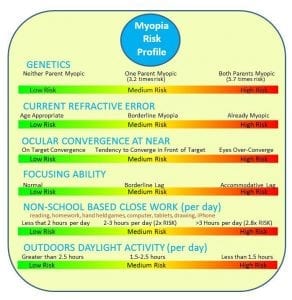Myopia typically begins in childhood and tends to progress; with stronger prescription glasses required each year. In most cases, myopia stabilizes around age 25 years but sometimes it continues to progress with age.
If you are myopic or near-sighted, you typically will have difficulty reading road signs, the board at school and seeing distant objects clearly. Generally you see well for close-up tasks such as reading and computer use. Myopia occurs when the eyeball is too long, relative to the combined focusing power of the cornea and lens. This causes light rays to focus at a point in front of the retina, rather than directly on its surface.

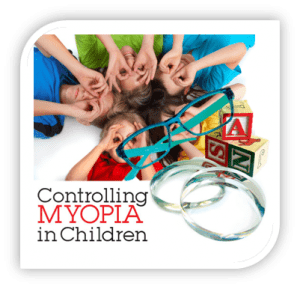
Prevalence of myopia in children and young adults is increasing. Earlier age of onset is linked to faster myopic progression, which in turn contributes to the health implications of progressive myopia that place children at risk for eye diseases. The lifetime risks of myopic pathologies such as myopic maculopathy, cataract, glaucoma and retinal detachment are significant. Myopia is a pathological condition and there are no “safe” levels.
We can slow myopia: research shows there are a number of ways we can slow myopia progression in children, and in turn reduce risk of eye disease. “Whilst there is no magic cure for myopia control, the child at-risk of developing myopia, should not have to suffer from inaction:-Inaction is no longer acceptable.”
We can slow and even stop myopia progression. Research shows there are a number of ways we can slow myopia progression in children. Altering optics, pharmacological agents and behavioural modifications, individually, or in tandem have proven to be effective to varying and cumulative degrees.
Pharmacological agents

Reading Glasses

Multifocal, bifocal, extended focus and reading glasses help control any residual over-convergence and reduce the need for excess accommodation. These slow myopia (25% effective) only when there is over-convergence at near. Plus powered readers will often prove helpful as an adjunctive therapy. Full correction and/or under-correction single vision glasses do little to slow myopia progression. Myopia inevitably progresses and stronger prescription lenses are required each year.
Myovision Spectacles
The desired change in optics required to reduce myopic progression is difficult to achieve with spectacle lenses. Lenses such as Myovision, designed to slow progression of myopia have shown variable results. Inability to keep optical control on visual axis being the major limitation.
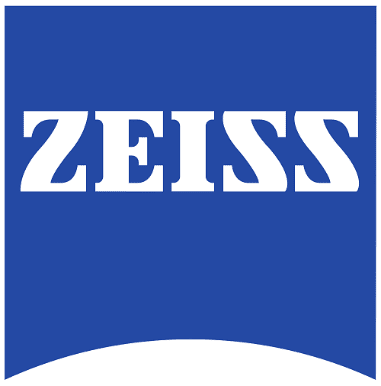
Contact Lenses

Negatively powered contact lenses (0% effective) induce negative spherical aberration placing the focus slightly behind the retina, increasing accommodative demand and reducing focus accuracy. This augments the effects of peripheral defocus behind the retina and results in the signal for increased axial eye growth.
Distance centred multifocal soft contact lenses have shown myopia control results ranging from 29% to 50% effectiveness over 24 months. The optics create a similar optical effect to orthokeratology but have yet to prove to be as effective.
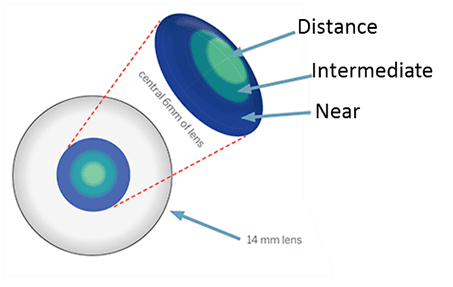
Vision Therapy
There is an association between higher levels of over-convergence and reduced focussing reserve at near in myopic children along with greater variability in accommodative responses. Vision therapy improves binocular co-ordination, peripheral awareness, reduces accommodative stress and strengthens vergence reserves. Re-organising the visual environment, reduces focussing stress and helps slow myopia progression.

Orthokeratology
Orthokeratology involves custom designed contact lens retainers which are worn during sleep. Similar to retainers for the teeth, these lenses adjust the shape of the cornea, correcting for myopia by flattening the central cornea whilst steepening the mid-peripheral cornea. This provides clear vision all day, without glasses or contact lenses and shifts the peripheral optics of the myopic eye from behind, to in front of the retina, whilst pushing the central focus back onto the fovea providing clear vision. This change in the shape of the image shell slows axial elongation and is 85% effective as a stand-alone treatment in stopping myopia progression.
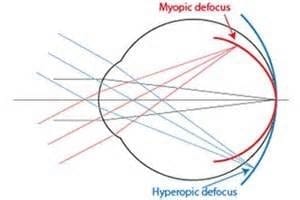
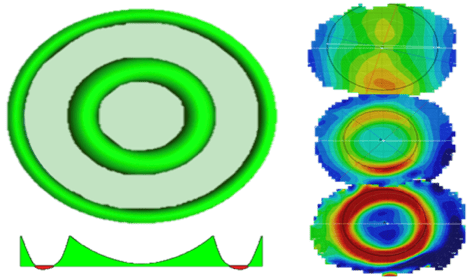
Adjusting the mid-peripheral optics helps counter accommodation errors, improves functional peripheral visual fields, reduces esophoria and aids focussing all whilst reducing the signal for myopia progression. 20/20 unaided vision can be restored in as little as two days to one week depending on severity.
Dual/combined therapy such as reading glasses, atropine and vision therapy can be used in combination with orthokeratology to gain greater myopia control.
For more information about Orthokeratology please visit the following websites:
NaturalVue and MiVision
Two recently designed contact lenses based on the optics of orthokeratology vision results are NaturalVue and MiVision. These provide similar peripheral optics results to orthokeratology, for myopes, when worn on a daily wear basis. The effect is only effective when the lenses are worn and thus lack the 24/7 effect of orthokeratology. Reported success rates in slowing/stopping myopia progression are around 65%.
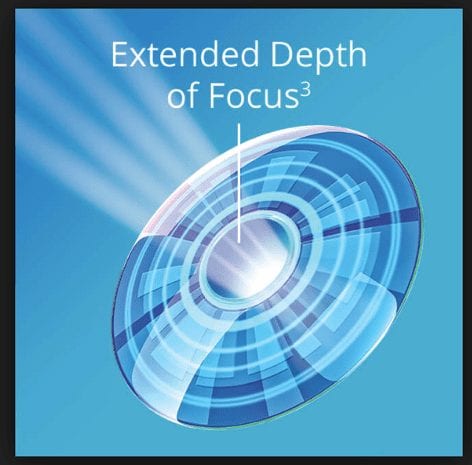
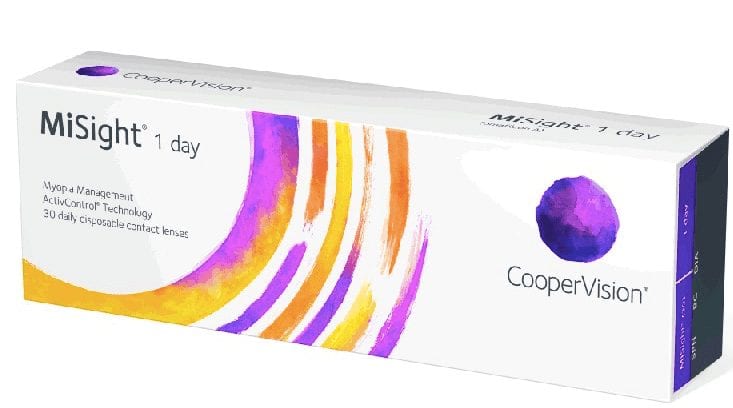
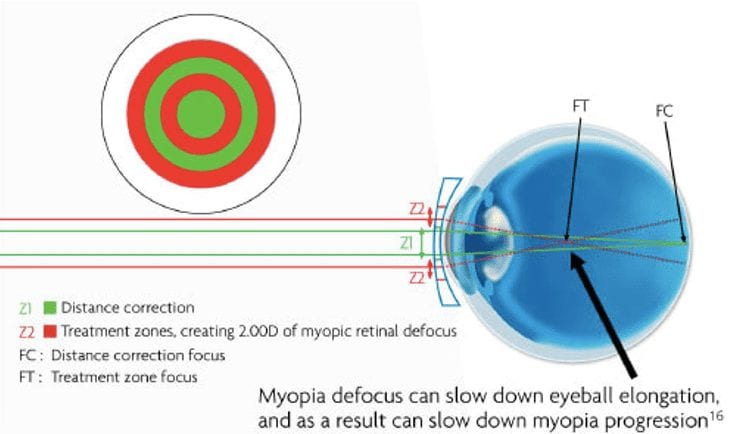
Dr Ieuan H. Rees. (Optometrist)
Buck & Todd Optometrist
Located at 103 Alfred Street, Mackay, 4740.


